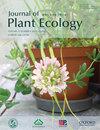作物多样性实验:从机理上理解年度作物系统中物种多样性的好处
IF 3.9
2区 环境科学与生态学
Q2 ECOLOGY
引用次数: 1
摘要
受草原生物多样性实验的启发,该实验研究了植物多样性对初级生产力的影响,于2018年设立的作物多样性实验旨在测试这些生物多样性效益是否也适用于年度作物系统,以及作物混合物是否也实现了超高产,即混合物产量高于最高产量的单一栽培。前三年的实验表明,与平均单作相比,混合作物不仅能提高产量,而且通常也能提高产量最高的单作。在压力更大的环境条件下,作物多样性效应更强,通常与豆类作物混合使用。然而,我们观察到,在有利的条件下和不含豆类的混合物中,也存在越轨高产现象。通过对产量效益潜在机制的研究,我们发现作物物种之间存在直接互补性,也存在通过其他生物产生的间接影响。前者包括氮素吸收的化学、空间和时间互补性,导致水分吸收互补的根系分布互补性,以及光照利用的空间和时间补充性。在间接机制中,我们确定了作物混合物中杂草的互补抑制和更丰富的植物生长促进微生物,除了作物多样性实验中尚未研究但在其他地方证明的病虫害抑制的互补性。因此,作物多样性实验不仅支持生物多样性实验中确定的生态过程也适用于作物系统的假设,而且支持可耕地作物系统的多样化为可持续生产粮食提供了宝贵的工具。本文章由计算机程序翻译,如有差异,请以英文原文为准。
Crop Diversity Experiment: towards a mechanistic understanding of the benefits of species diversity in annual crop systems
Inspired by grassland biodiversity experiments studying the impact of plant diversity on primary productivity, the Crop Diversity Experiment set up in 2018 aimed at testing whether these biodiversity benefits also hold for annual crop systems and whether crop mixtures also achieved transgressive overyielding, i.e. yield in mixture that was higher than the most productive monoculture. The first three years of the experiment demonstrated that crop mixtures do not only increase yield compared to an average monoculture but often also compared to the highest yielding monoculture. The crop diversity effects were stronger under more stressful environmental conditions and were often achieved in mixtures with legume crops. However, we observed transgressive overyielding also under favourable conditions and in mixtures without legumes. With our investigation of the underlying mechanisms of the yield benefits we found both direct complementarities between crop species and indirect effects via other organisms. The former included chemical, spatial and temporal complementarity in N uptake, complementary root distribution leading to complementary water uptake, as well as spatial and temporal complementarity in light use. Among the indirect mechanisms we identified complementary suppression of weeds and more abundant plant growth-promoting microbes in crop mixtures, apart from complementarity in pest and disease suppression not yet studied in the Crop Diversity Experiment but demonstrated elsewhere. In consequence, the Crop Diversity Experiment supports not only the assumption that the ecological processes identified in biodiversity experiments also hold in crop systems, but that diversification of arable crop systems provides a valuable tool to sustainably produce food.
求助全文
通过发布文献求助,成功后即可免费获取论文全文。
去求助
来源期刊

Journal of Plant Ecology
生物-植物科学
CiteScore
4.60
自引率
18.50%
发文量
134
审稿时长
3 months
期刊介绍:
Journal of Plant Ecology (JPE) serves as an important medium for ecologists to present research findings and discuss challenging issues in the broad field of plants and their interactions with biotic and abiotic environment. The JPE will cover all aspects of plant ecology, including plant ecophysiology, population ecology, community ecology, ecosystem ecology and landscape ecology as well as conservation ecology, evolutionary ecology, and theoretical ecology.
 求助内容:
求助内容: 应助结果提醒方式:
应助结果提醒方式:


